From acorn squash to zucchini, we’re covering the most popular types of squash from A to Z in this helpful guide to squash!
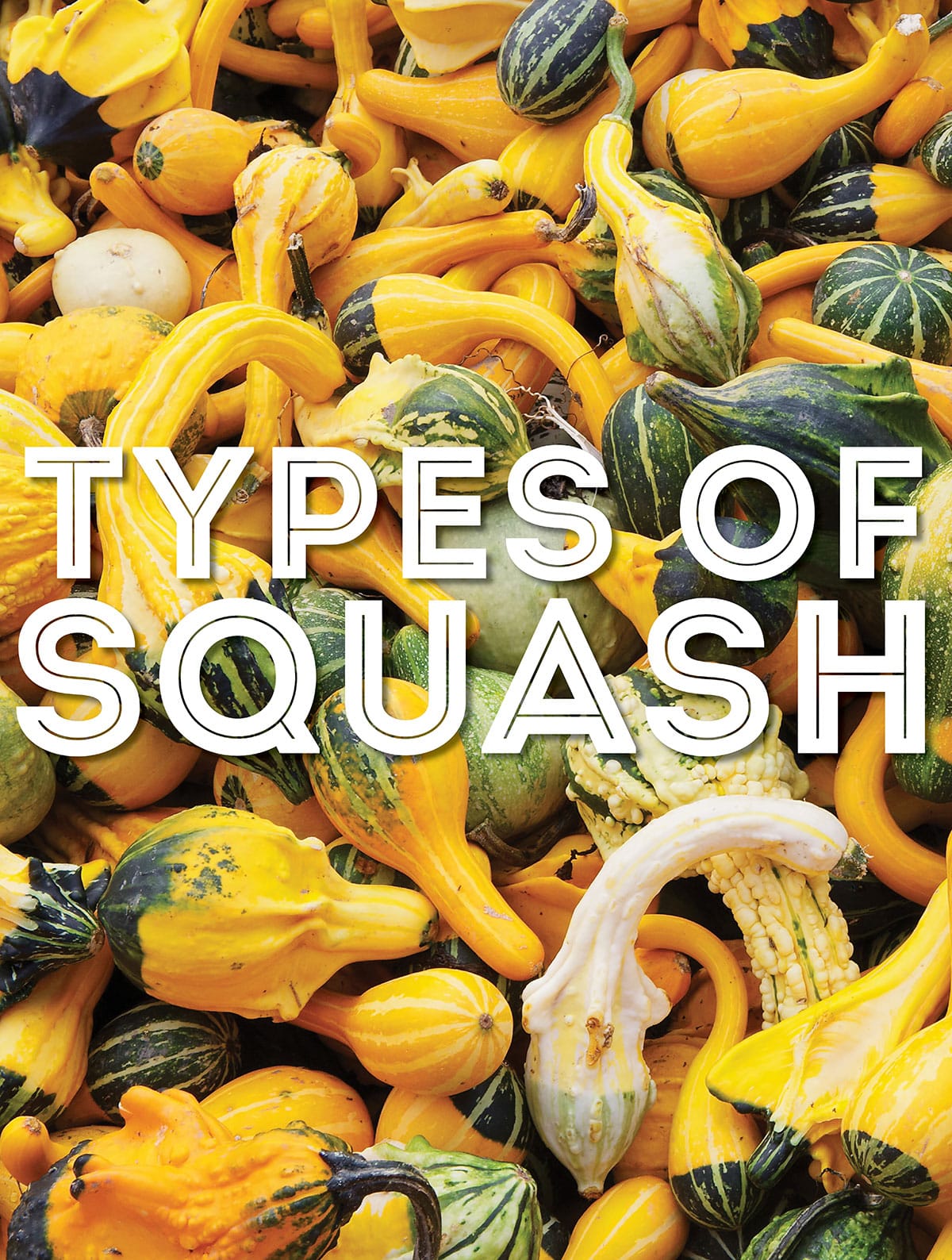
There’s so much more to squash than pumpkins and zucchinis, so today we’re doing a deep dive into the different types of squash!
What is a squash?
First things first. Is squash a fruit or a vegetable? Squash are fruits. They contain seeds and come from the flowering part of a plant. This is why tomatoes and eggplant are also fruits (despite having savory flavor profiles). Many squash have a mild nutty flavor and smooth texture that makes us think of them as a vegetable, and they definitely lack the natural sugar of most fruits.
Summer Squash vs. Winter Squash
There are two main categories of squash:
- Winter Squash: These tend to have a thicker skin and can be stored for quite a while (all through the winter).
- Summer Squash: These, on the other hand, have more tender skins and do not store for as long. Think zucchini and yellow squash.
- – Types of Summer Squash –
- – Types of Winter Squash –
- Acorn Squash
- Ambercup Squash
- Atlantic Giant
- Autumn Gold Pumpkins
- Baby Bear Pumpkins
- Baby Boo Pumpkins
- Big Max Squash
- Big Moon Pumpkins
- Blue Prince Pumpkins
- Bonbon Squash
- Buttercup Squash
- Butternut Squash
- Carnival Squash
- Charisma Pumpkins
- Cinderella’s Carriage
- Connecticut Field Pumpkins
- Dickinson Pumpkin
- Fairytale Pumpkins
- Guatemalan Blue Squash
- Hijinks Pumpkins
- Honey Bear Squash
- Hubbard Squash
- Honeynut Squash
- Jack-O-Lantern Pumpkin
- Long Island Cheese Pumpkins
- Lumina Pumpkins
- Pepitas
- Pie Pumpkins
- Prizewinner Pumpkins
- Red Kuri Squash
- Red Warty Thing Squash
- Spaghetti Squash
- Super Moon Pumpkins
- Turban Squash
- Yokohama Squash
– Types of Summer Squash –
Summer squash are typically harvested in the warmer months when they are still immature, meaning they have a more tender skin and texture.
Banana Squash
Banana Squash are extremely elongated and grow up to 3 feet long. Their skins aren’t edible, so they are typically cut in half laterally and the flesh cut out. They are sometimes known as pink banana squash. This is an odd squash in that It can be grown as a summer squash simply by harvesting it during the summer, but you can also wait (letting it grow larger) and pick it as a winter squash.
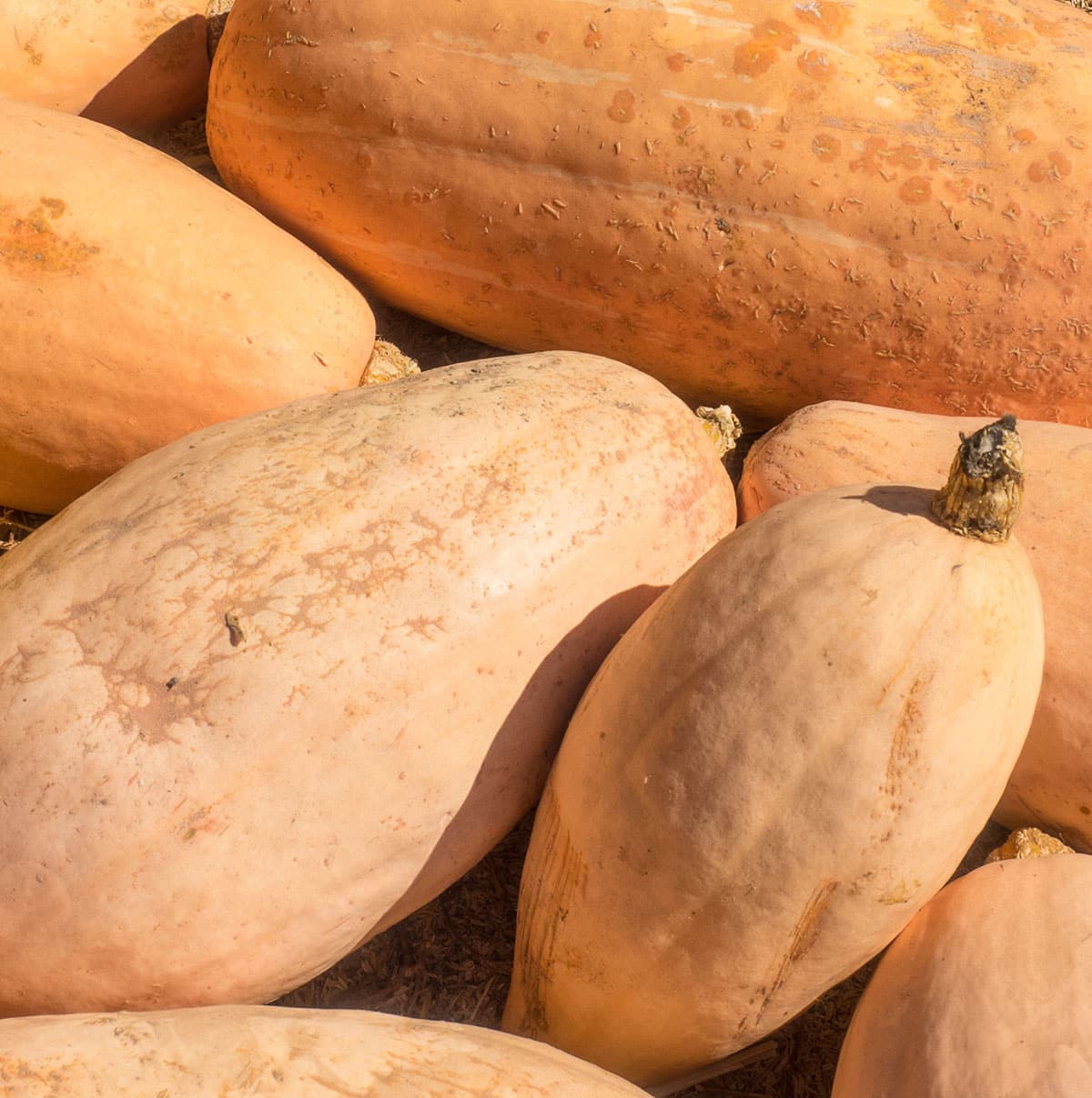
Chayote Squash
Chayote Squash are grown in Mexico, Honduras, and Guatemala, but have recently found their way into international markets in the US. You can eat this summer squash raw or cooked. It is often used in ways similar to a cucumber. Slice it and put on sandwiches, dice it and add to salads, shred it and put into slaw or salsa.
Cousa Squash
Cousa Squash look very much like a zucchini with a light green color and a bulb like end. It’s thin skin can be eaten just like a zucchini. Give them a try in Zucchini Cheddar Bites.
Crookneck Squash
Crookneck Squash look just like yellow squash in color, size, and shape, but they have distinctive bumpy ridges, a harder skin, and their tapered end bends to one side. They could easily be substituted into this Zucchini Crisp Recipe (Tastes Like Apple Crisp!).
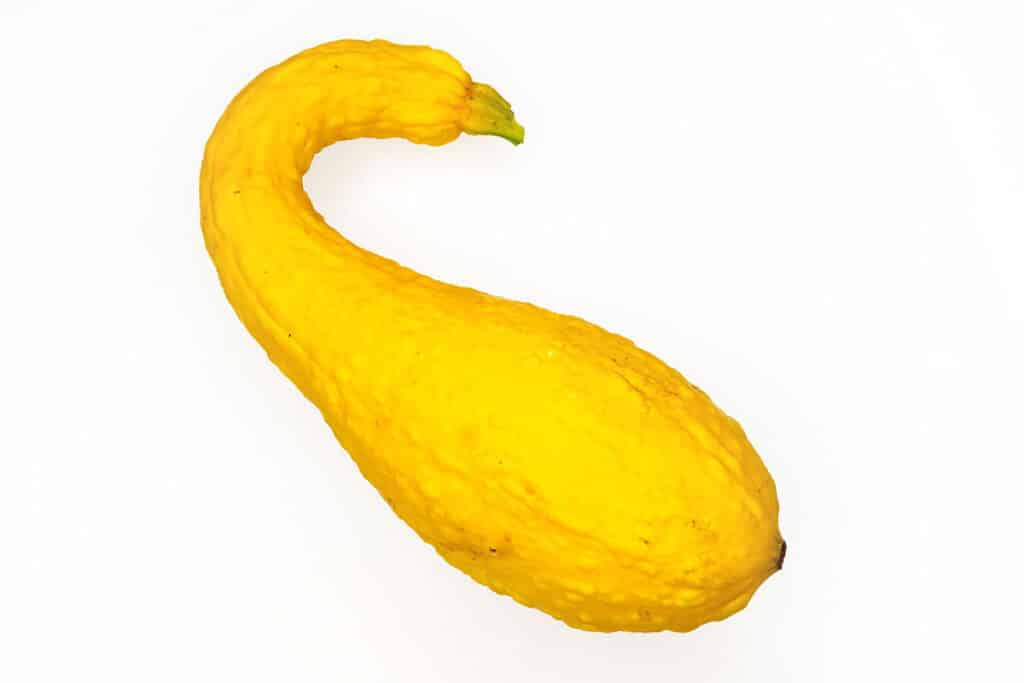
Delicata squash
Delicata Squash is an heirloom variety with a cream and green striped skin. Heirloom simply means it is an old variety not one of the thousands of recent fruit hybrids grown today. How old? Well, there isn’t a set answer. Some say an heirloom must be 100 years old, some longer. Sorry, just a little trivia. The delicata squash is a very tender oblong fruit. The name, no doubt, comes from its tenderness which also makes the skin perfectly edible. We are fans of eating the skins as it prevents waste, and they are generally loaded with fiber. These taste somewhat like sweet potatoes which is a major plus. Like sweet potatoes and other squash, they are great baked, roasted, and stuffed!
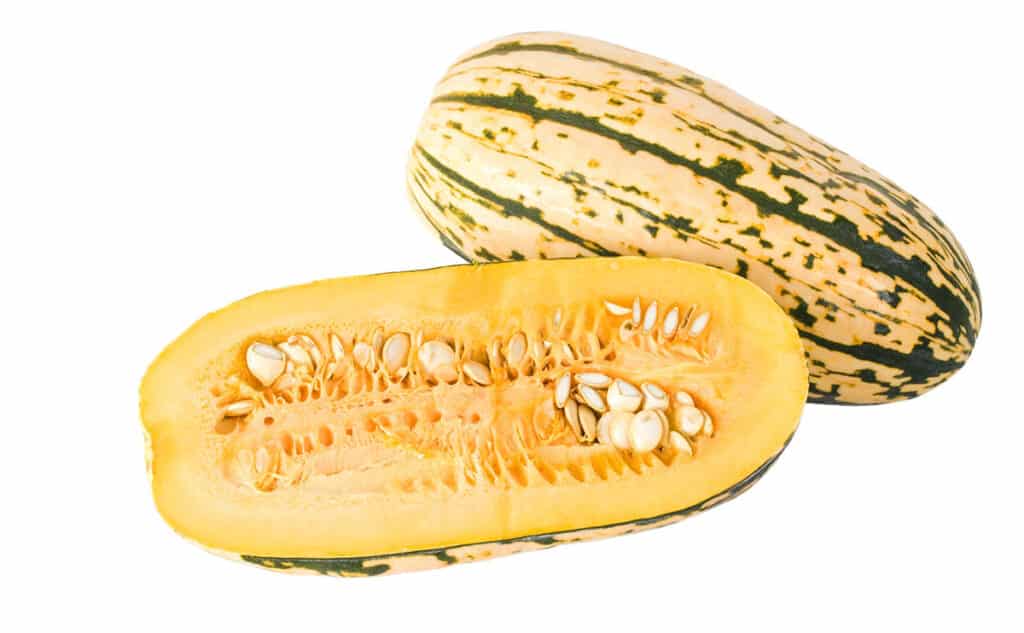
Fortune Squash
Fortune Squash are another variety of yellow squash being almost identical. Their skins tend to be slightly paler and they are often smaller as they are generally harvested earlier. You can use these in all the same ways you would use a yellow squash or zucchini.
Globe Zucchini
Globe Zucchini are also known as Round or 8-Ball Zucchini. It is a round, softball-sized variety that is great for stuffing. Just scoop out the insides, stuff, and roast! Their unique round shape would make them the perfect fit in Stuffed Zucchini (3 Ways) for a really unique look.
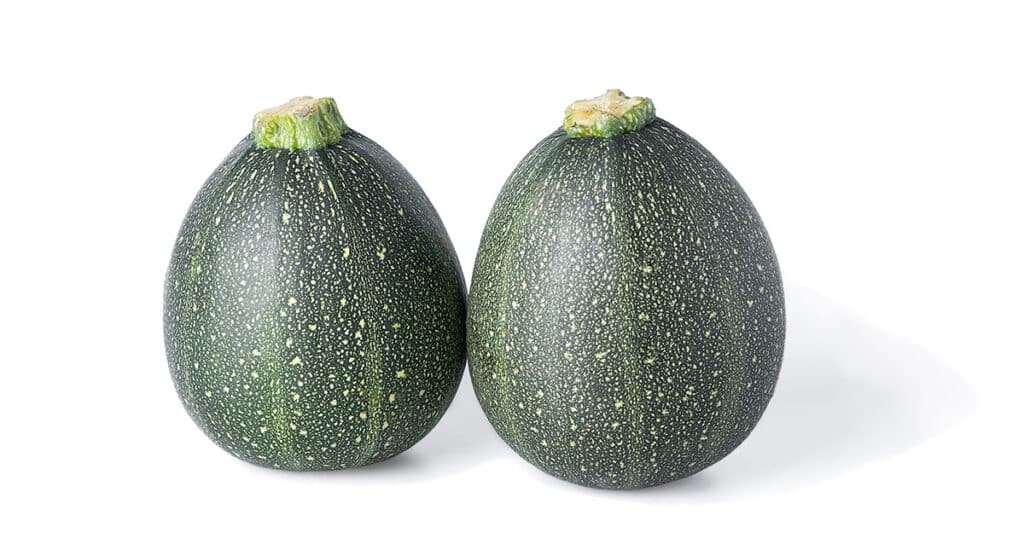
Gold Rush Squash
Gold Rush Squash are a variety of yellow squash noted for their very bright yellow skin which contrasts with their green top that looks like the top to a zucchini not a yellow squash. Use this summer squash like you would other yellow squash. The bright yellow skin would go well with this Stuffed Zucchini recipe as the skin would make a nice presentation.
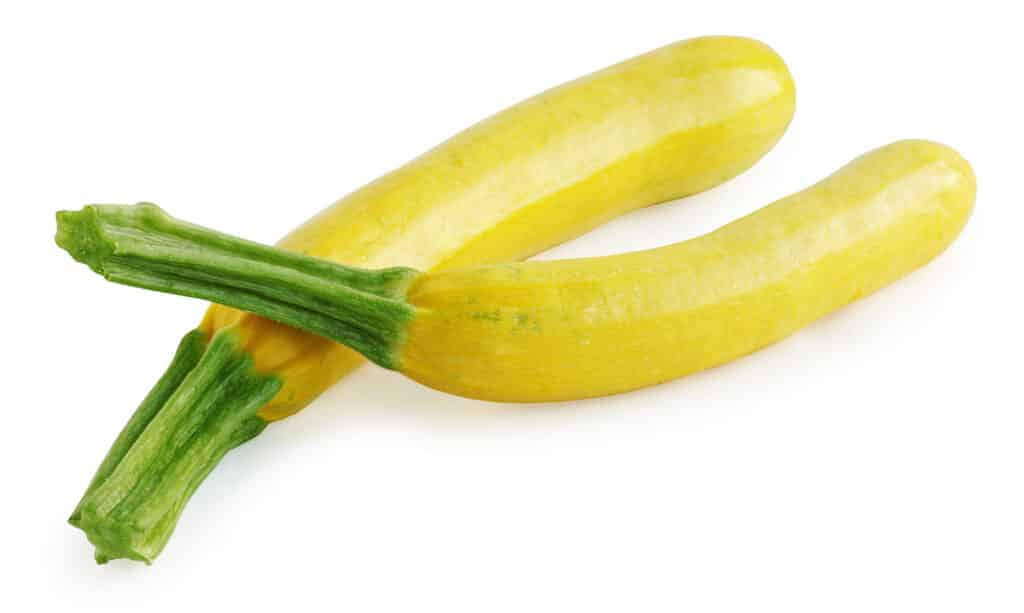
Green Egg Squash
Green Egg Squash look very much like a zucchini or 8-ball squash (round zucchini). They are an oval squash typically 5” long.
Lebanese Squash
Lebanese Squash are a shorter pale green variety of zucchini grown in the Middle East. There they are most commonly served stuffed often at feasts and special occasions.
Pattypan Squash
Pattypan Squash are the small yellow or green squash with scalloped edges you often see used decoratively in table displays. They have a soft skin, so they can be eaten raw, but are more commonly roasted, grilled or used in stir fry. They’d be perfect to replace the zucchini in this Corn Succotash!
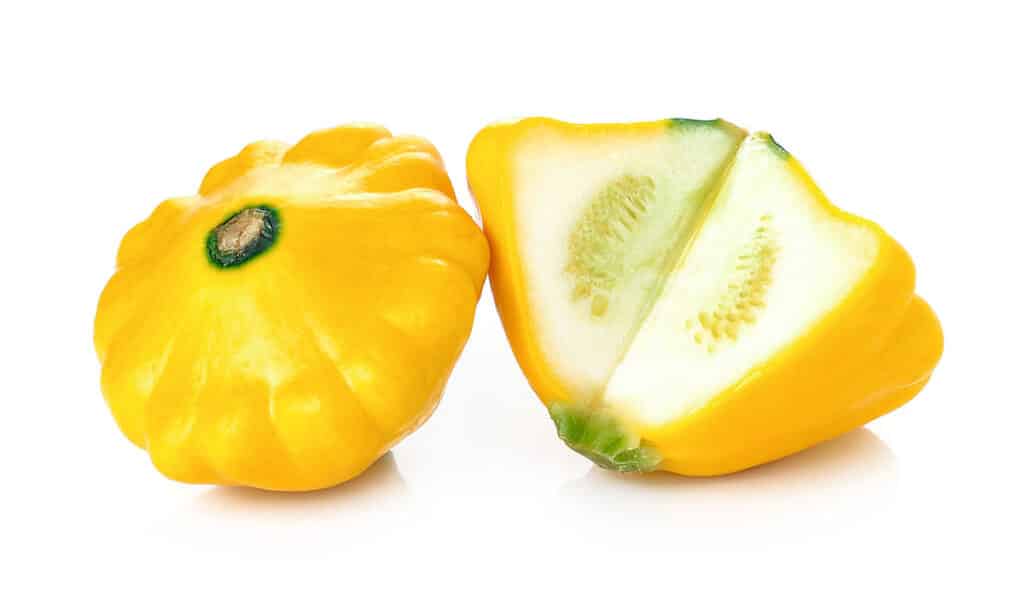
Tromboncino Squash
Tromboncino Squash is another oddity of the squash family. It looks much like a zucchini except that they grow in curls. They grow up to 3 feet long which is not surprising. Zucchini will grow extremely large if you don’t pick them when they are small (Hint, pick them small as the skin gets extremely hard and the seeds huge). You can use this squash as you would a zucchini, but they have the additional advantage that they store better than most summer squash.
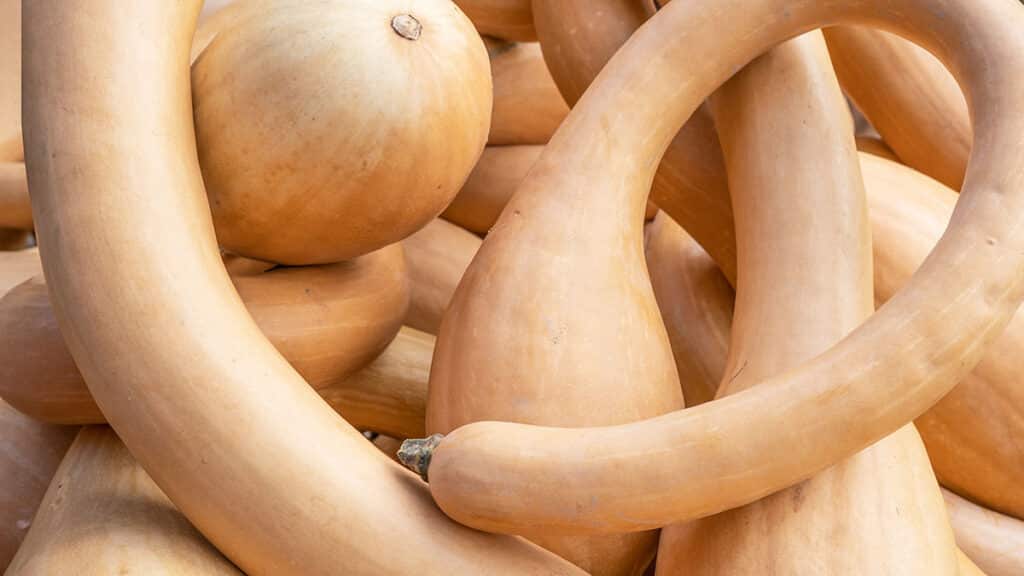
Yellow Squash
Yellow Squash are typically the size of zucchini and normally found next to zucchini, often at the same price, in the grocery store. They have a dull to bright yellow skin that is perfectly edible. You can easily substitute yellow squash for zucchini. They are great in stir-fry and sautéed vegetables. If you want to make the popular Zoodles without the green tint, just toss a few yellow squash on your spiralizer and crank away Zucchini Pasta with Creamy Avocado Pesto. Another great use for yellow squash is as a lasagna noodle substitute. This is commonly done with zucchini, but yellow squash will give it a look closer to traditional lasagna noodles. The BEST Zucchini or Squash Lasagna Recipe. Also, like zucchini, they only have about 5 calories per ounce and have a health supporting nutrition profile.
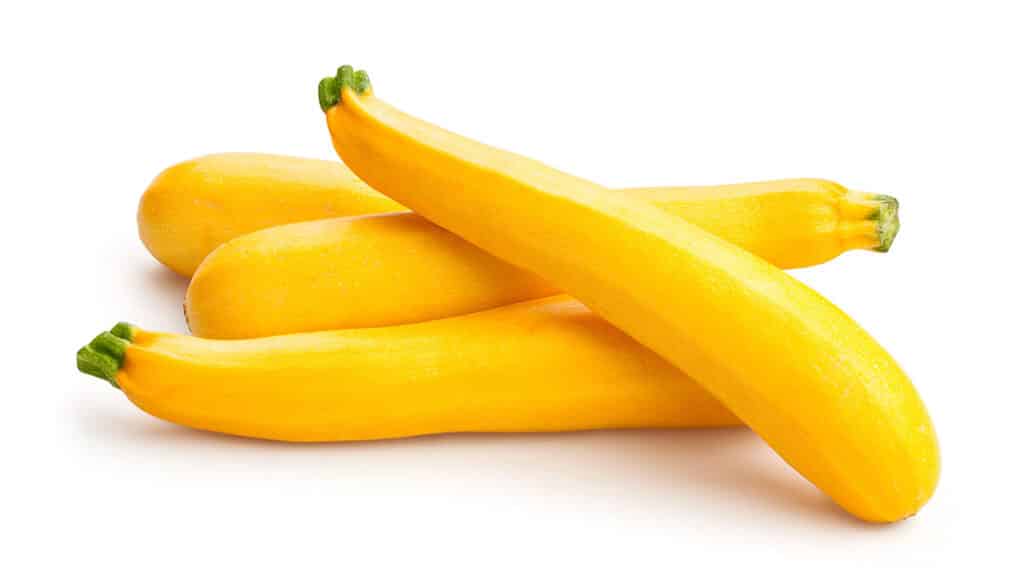
Zephyr Squash
Zephyr Squash is a rather unique summer squash looking like a yellow squash in the top half but green in the bottom half making a unique presentation. Use it like you would other yellow squash.
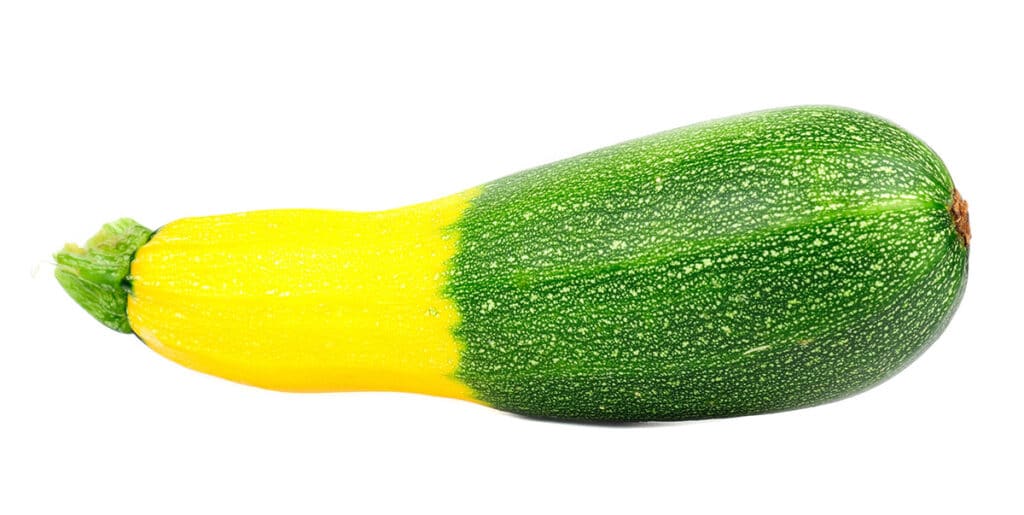
Zucchini
All squash plants (including zucchini) originate in the Americas. When explorers discovered these starchy plants, they brought them back to Europe and started growing and cultivating them there. It was in Italy that the modern-day zucchini finally came to be, where it was dubbed zucchino (little squash). The zucchini made its way back to America in the 1920s, where it was ignored by the average consumer for about 50 years. We just didn’t know what we were missing! But it’s okay, today we’ve got an entire arsenal of zucchini recipes from zucchini noodles to stuffed zucchini to zucchini dessert crisp!
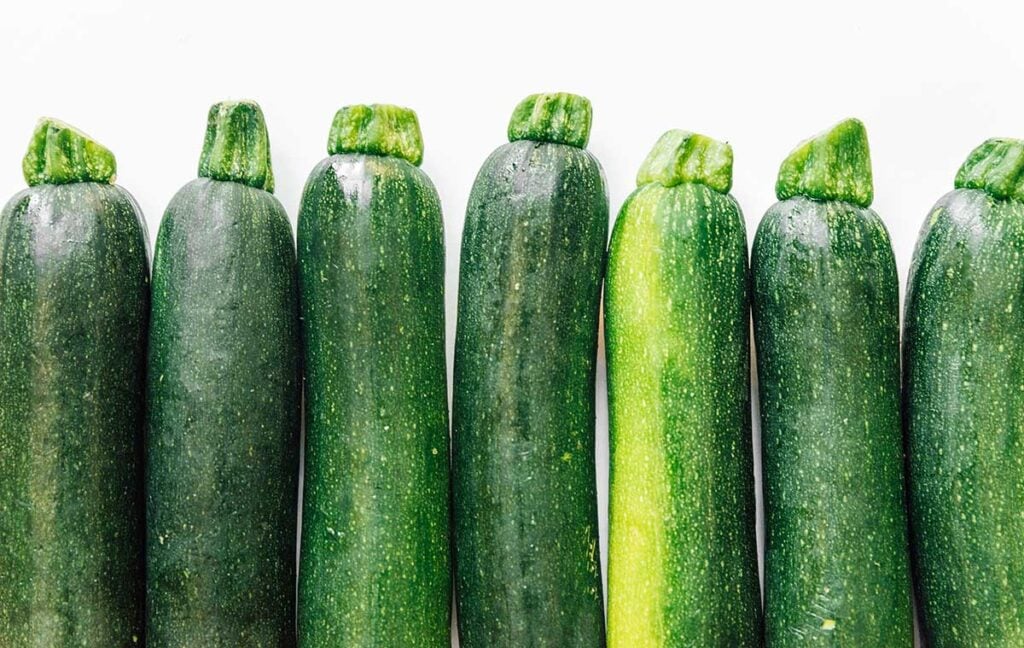
– Types of Winter Squash –
While summer squash are harvested when the squash is immature, winter squash are harvested when mature, meaning the skin is much thicker and the seeds have fully matured.
Acorn Squash
Acorn Squash are a small winter squash with bright yellow-orange flesh. You can roast, steam, or even microwave them to be used in a variety of acorn squash recipes. They have a mild flavor that can be made sweet or savory – great with herbs or maple syrup. The shape of the acorn squash makes it difficult to peel. Fortunately, the peel is perfectly edible when cooked! If the texture isn’t your thing, simply scrape the cooked flesh out while eating. That peel, however, is loaded with fiber. For more on the incredible nutritional profile of acorn squash as well as tips on how to roast, steam, sauté, or just microwave squash check out Acorn Squash 101 Nutrition + How to Cook It 4 Ways! I do have to say , however, my hands down favorite for taste and presentation is either Stuffed Acorn Squash or in this harvest bowl.
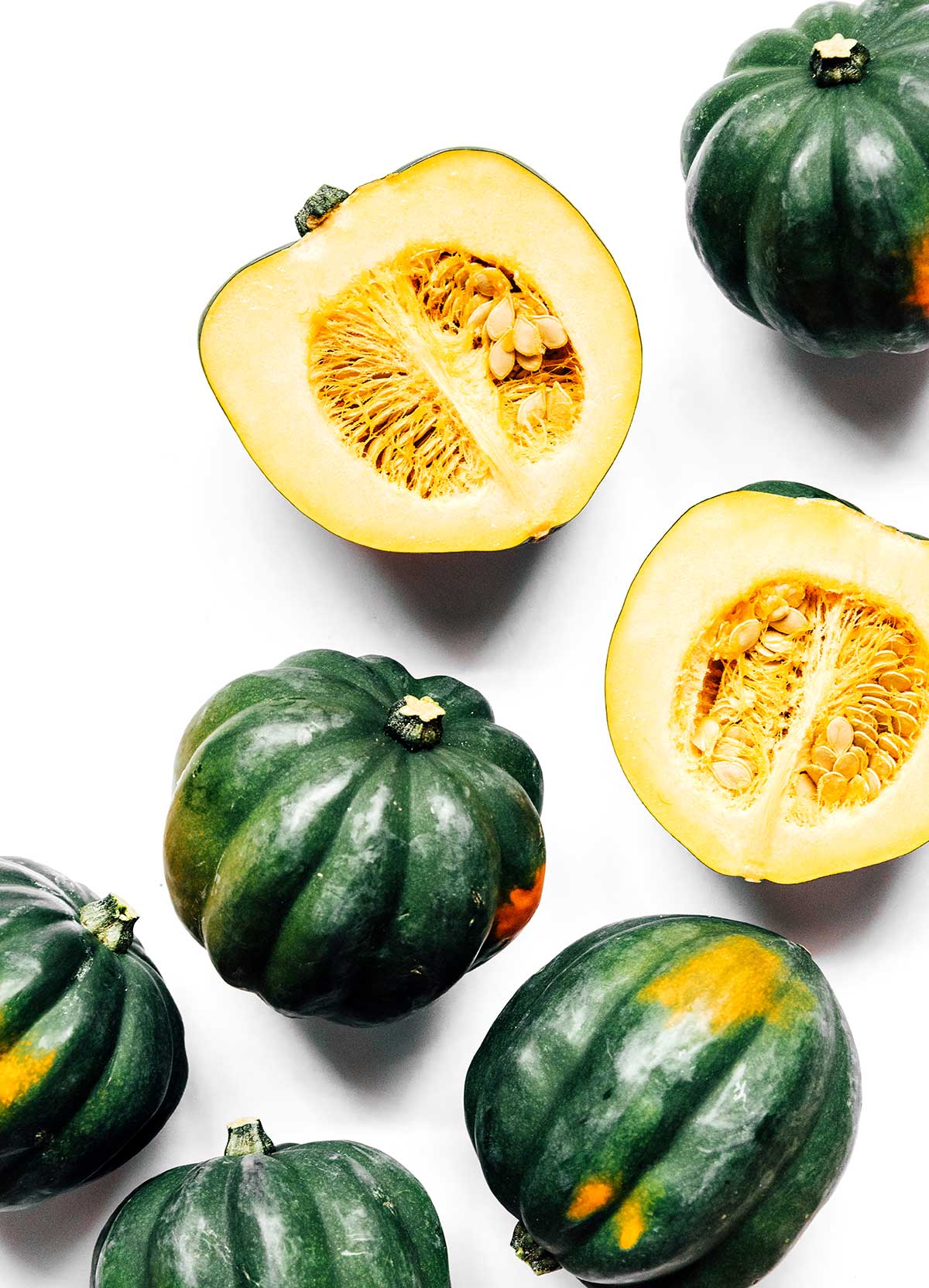
Ambercup Squash
Ambercup Squash are also called Japanese pumpkins. It has a green to orange skin and normally grows to the 4-6 lbs range. This winter squash is an oddity in that it can be eaten raw or cooked. Typically, only summer squash can really be eaten raw, but with squash there are few absolutes.
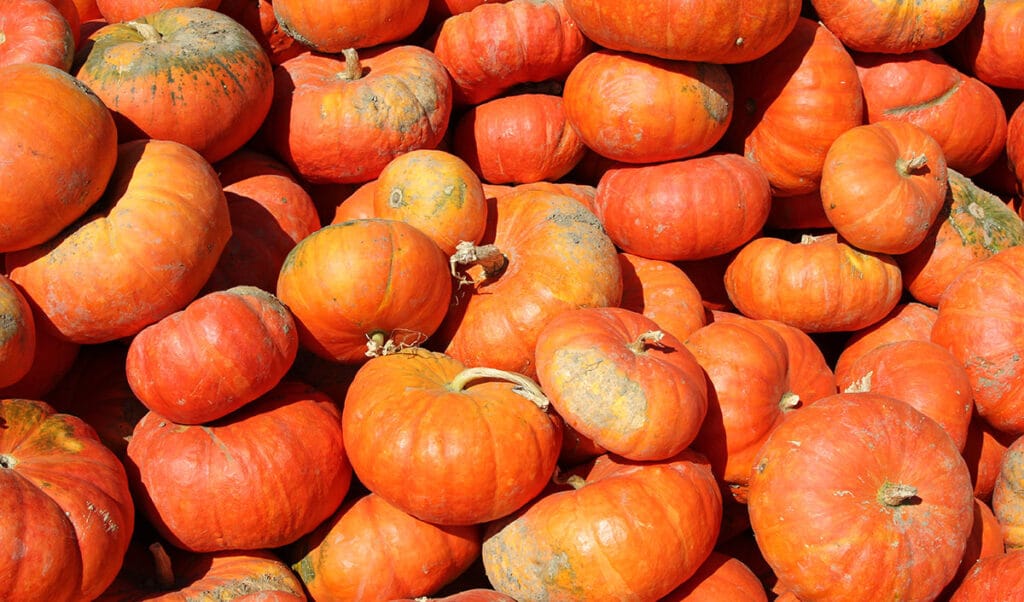
Atlantic Giant
Atlantic Giant is the largest pumpkin variety in the world. With some exceeding 1,000 lbs. They have been known to grow 15 lbs in a day! I grew up in Alaska. Each year we went to the AK State Fair for the junk food, the shows, and the agriculture exhibits. With the long sunny summer days that far north pumpkins on display grew to enormous 800-900 pound beasts. Alaska’s state record is 1,471 pounds.
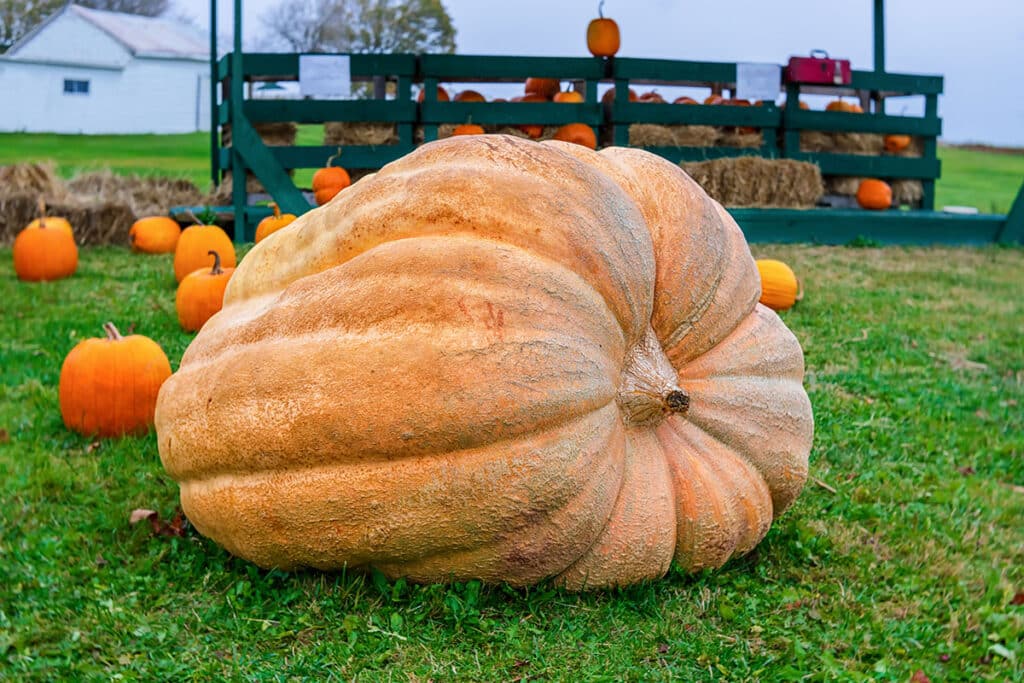
Autumn Gold Pumpkins
Autumn Gold Pumpkins are a hybrid pumpkin with a deep golden color making them a great decorative pumpkin, but they are also very good as pie pumpkins. And, did you know that dogs can and will safely eat pumpkin. Want an easy Halloween treat for your neighborhood canine friends? Try Candy Corn Pupsicles- Halloween Treats for Dogs! So, this year don’t throw your pumpkins in the compost pile after Halloween. Try a recipe or two with your uncut pumpkins.
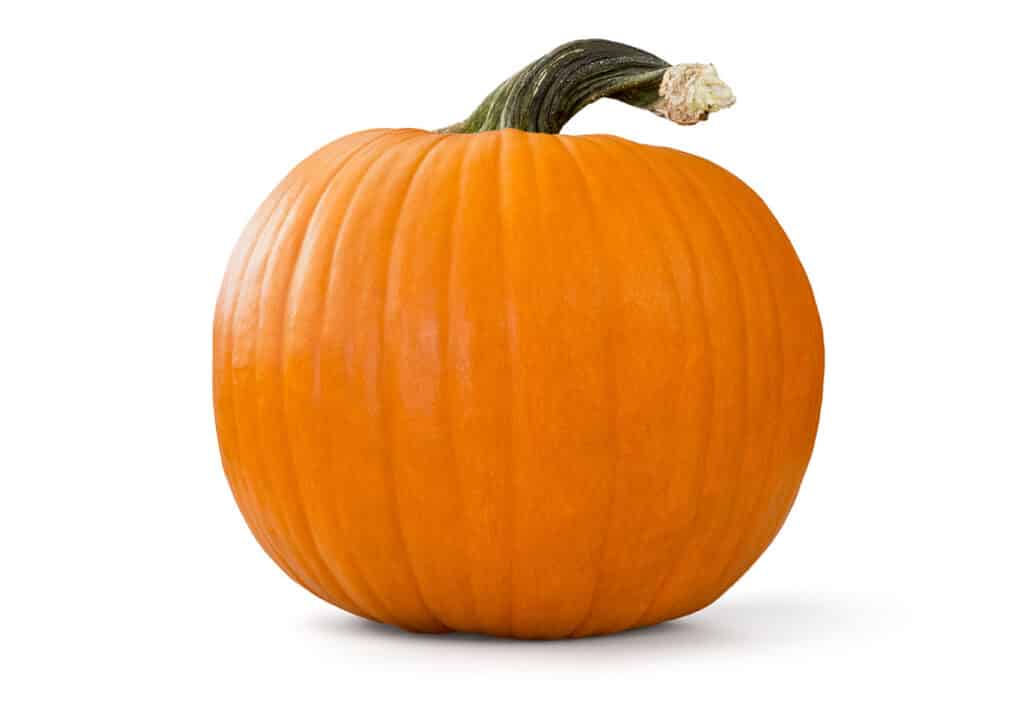
Baby Bear Pumpkins
Baby Bear Pumpkins is a smaller variety (2 pounds and perhaps 4 inches high) that grow well in home gardens with their frost resistant quality. They are also pretty good to cook with.
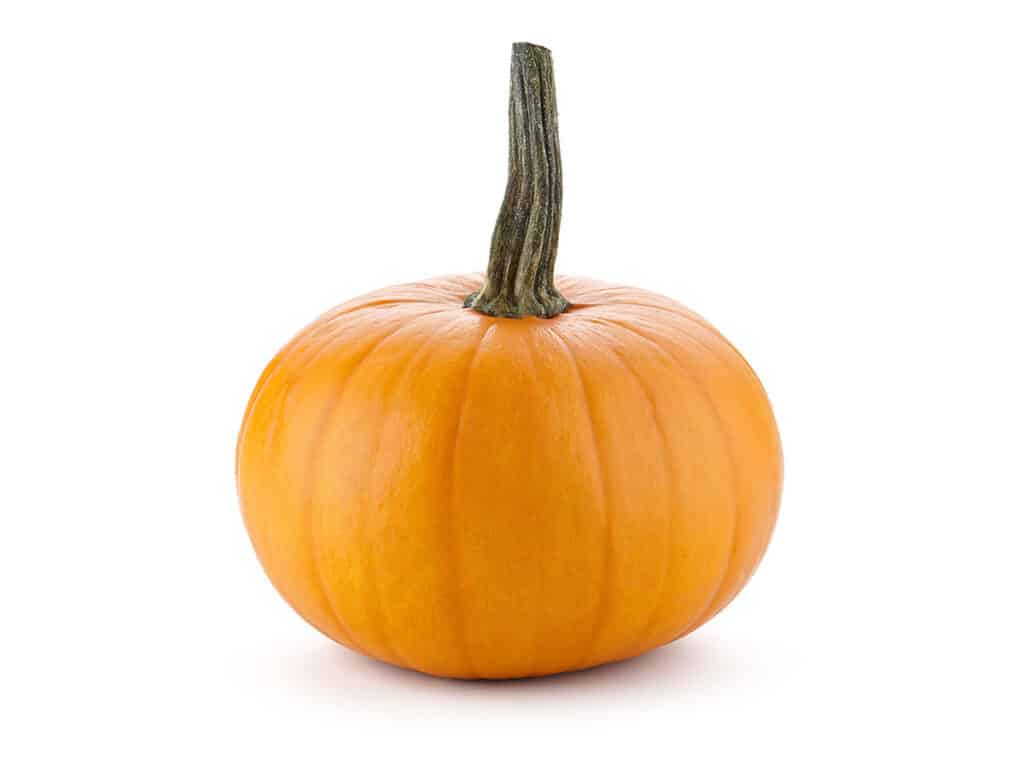
Baby Boo Pumpkins
Baby Boo Pumpkins are actually a variety of Acorn Squash. These are the tiny little white squash often used in Autumn displays.
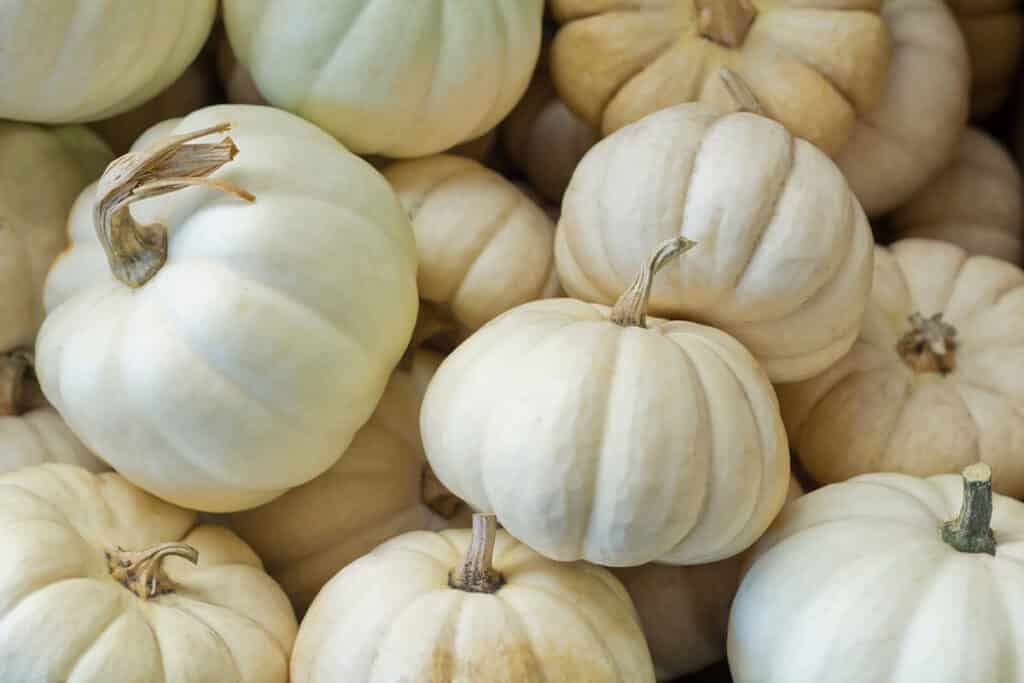
Big Max Squash
Big Max Squash is a pumpkin variety that can grow to over 100 pounds. Obviously, this is no where near the size the Atlantic Giant reach, but bigger than I want to hoist onto the table to cut into a jack-o-lantern. You could certainly, make a lot of puree out of one of these beasts. How to Make Homemade Pumpkin Puree. Why buy expensive canned pumpkin when you can easily make your own with those pumpkins sitting on your porch?
Big Moon Pumpkins
Big Moon Pumpkins are similar in size to the Big Max, but the flesh is a pale color and not normally eaten.
Blue Prince Pumpkins
Blue Prince Pumpkins are a flat pumpkin in an intriguing shade of blue. They are typically from 7-9 pounds and can make a nice display, if you can find them. They are said to have a creamy interior less stringy than most pumpkins and sweet flavor making them yet another pumpkin that cooks well.
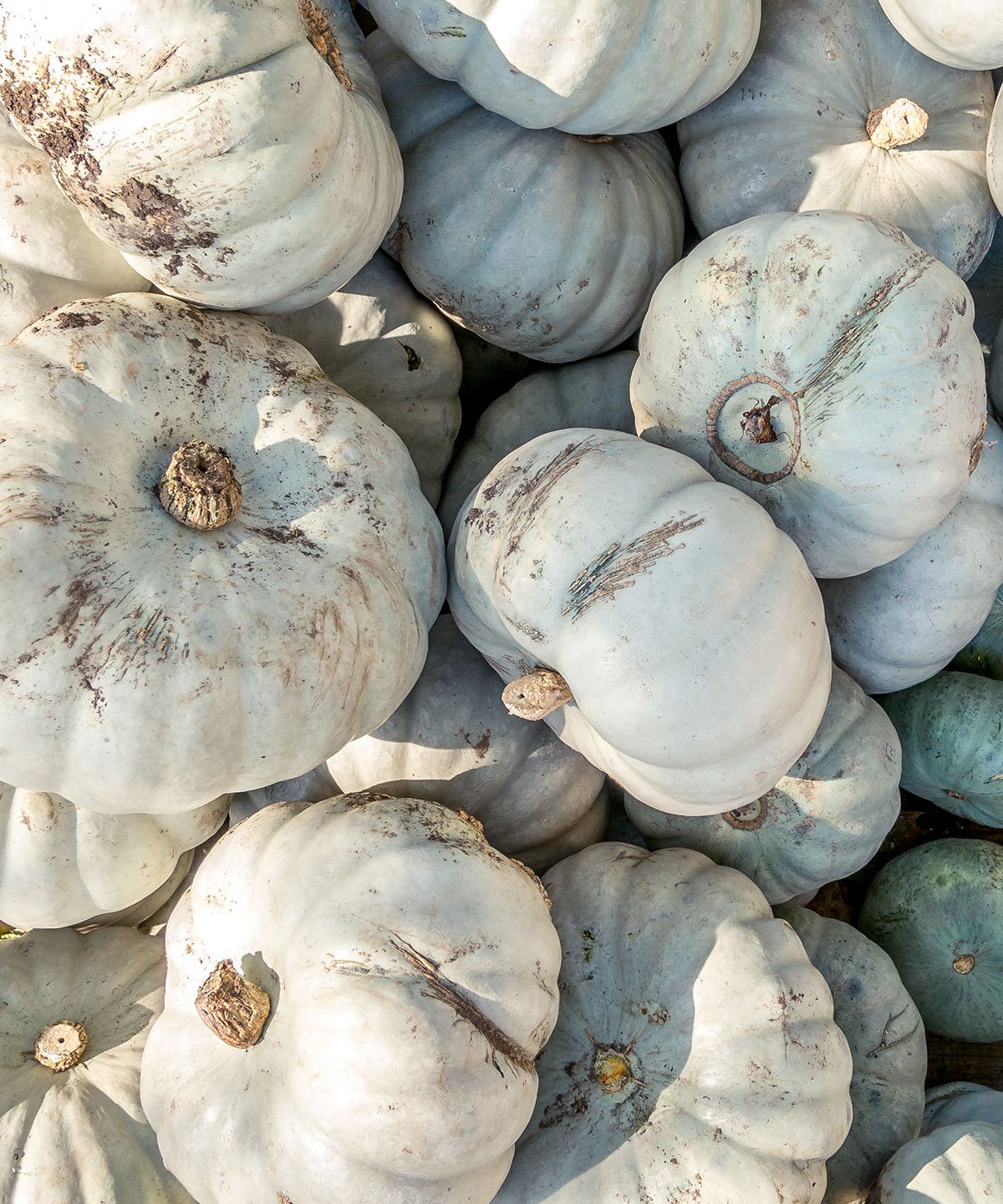
Bonbon Squash
Bonbon Squash look similar to buttercup squash with a flattened top and bottom. They are not as sweet as buttercup or butternut squash. They would go well in this Easy Butternut Squash Risotto.
Buttercup Squash
Buttercup Squash are a round green squash about the shape and size of a small pumpkin. The peel is inedible, most winter squash have a peel that is at best unappetizing, but the interior can be used in pretty much any winter squash recipe (except of course those using the unique spaghetti squash).
Butternut Squash
Butternut Squash are shaped like a bulb and have a distinctive tan skin. They are great roasted with the skin on or cubed then roasted, or in so many other ways. Here are 10 Vegetarian Butternut Squash Recipes You’ll LOVE. As if we need another reason to love butternut squash, it’s also ultra-adaptable! You can use it as a substitute for pumpkin, sweet potato, or really any starchy orange veggie. Oh, and they are pretty healthy as well. Look here for Butternut Squash Nutritional Info and So Much More.
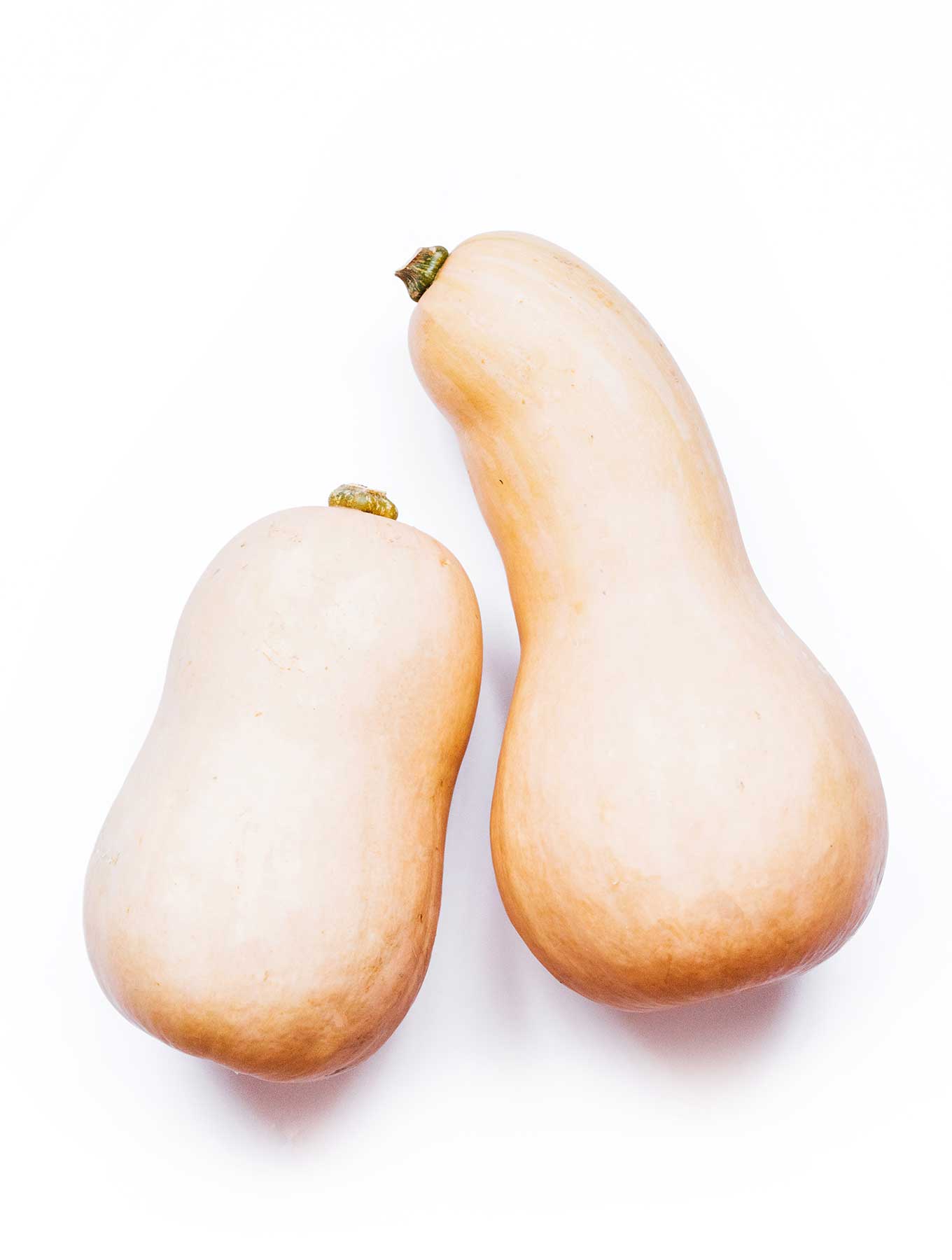
Carnival Squash
Carnival Squash are a small white pumpkin that have a rich orange flesh that is great for baking. So, by all means buy them to display on the porch, but as Autumn ends puree these little gems and get cooking.
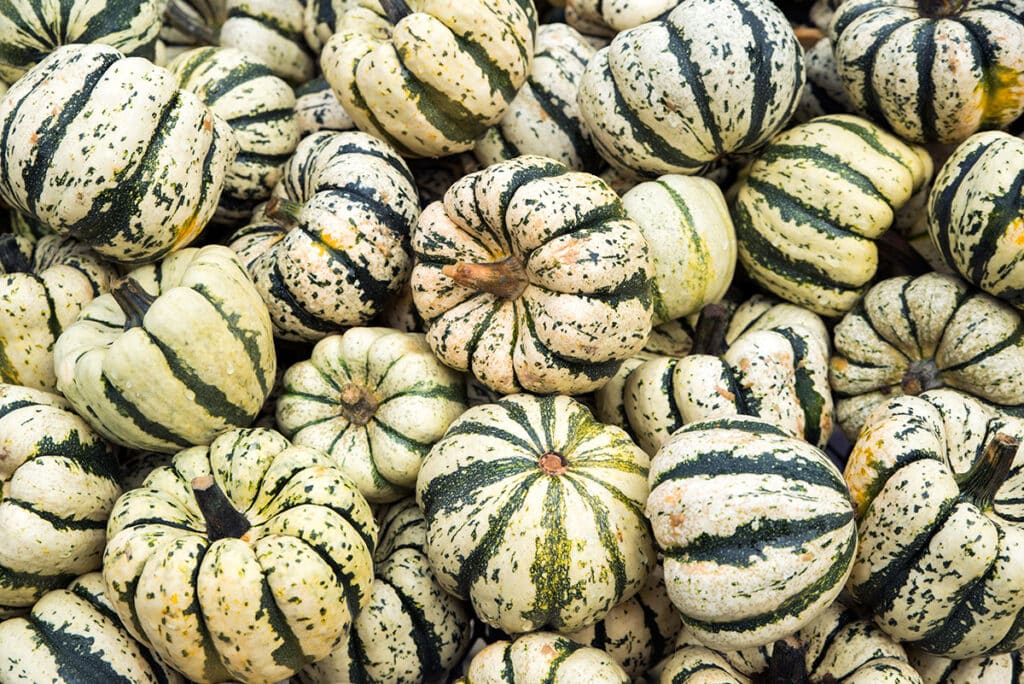
Charisma Pumpkins
Charisma Pumpkins are yet another classic looking pumpkin that is great for carving. They are said to be easy to grow as well.
Cinderella’s Carriage
Cinderella’s Carriage is a pumpkin that, of course, looks like the Disney version of Cinderella’s carriage. It is flat and deep reddish-orange. This is the pumpkin we often see stacked three high on neighbor’s porches in October. It is, however, a sweet pumpkin great for cooking. So when your neighbor tires of their display in November, cook up the pumpkin and invite them over for your favorite pumpkin dessert – Pumpkin Yogurt Bites with Butterscotch and a Gingersnap Crust.
Connecticut Field Pumpkins
Connecticut Field Pumpkins are one of North America’s oldest varieties having been grown by natives in the New England area before European settlement. They are noteworthy for their round shape and flat bottoms making them ideal for carving. I have to believe that Native Americans would have thought us mad to carve a face in pumpkins.
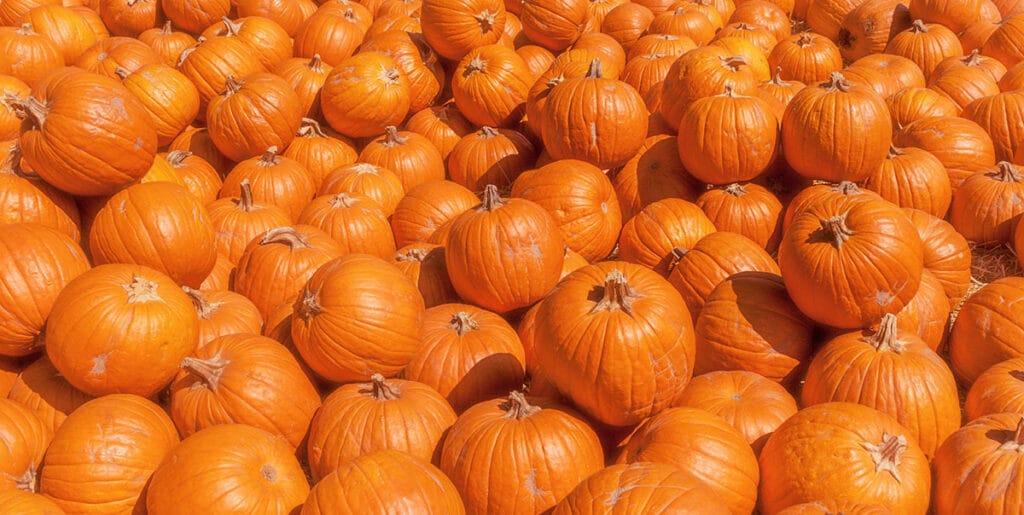
Dickinson Pumpkin
Dickinson Pumpkin is an American heirloom winter squash found regionally in the Midwest particularly Illinois though they appear to have originated in Kentucky in the early 19th Century. These typically grow to the 10-15 pound range.
Fairytale Pumpkins
Apart from looking so cute in a holiday display, fairytale pumpkins are great for eating! This variety can be used either raw or cooked, and works well with a number of cooking methods — boiling, roasting, or baking. These have a sweet flavor, making the pieces great for using in salads or eating with your favorite fruit dip! Use them in your next batch of pumpkin bread with cream cheese icing, and thank me later.

Guatemalan Blue Squash
Guatemalan Blue Squash are an oblong or oval squash weighing 6-10 pounds. The flesh is bright orange and can be cleaned and eaten as you would a pumpkin.
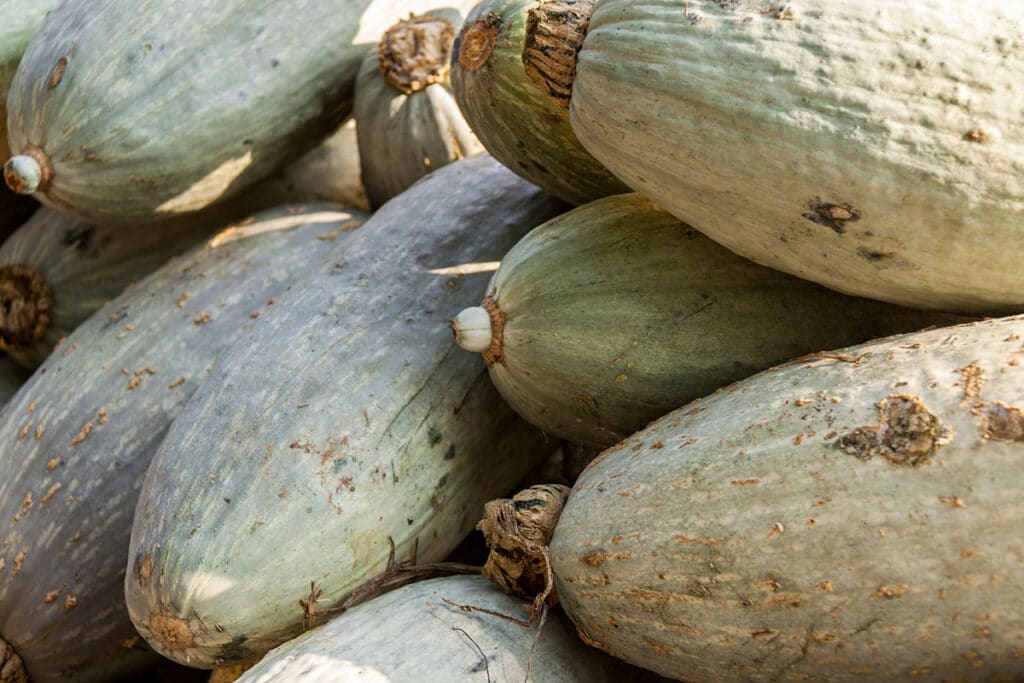
Hijinks Pumpkins
Hijinks Pumpkins are another classic pumpkin ideal for carving. They have an unusually smooth skin compared to other pumpkin varieties and typically weigh in from 6-9 pounds.
Honey Bear Squash
Honey Bear Squash got its name for its sweet flavor. They are a variety of acorn squash that was specifically bred to be baked and served in the half shell. Try them in place of the acorn squash in this Stuffed Acorn Squash recipe!
Hubbard Squash
Hubbard Squash are like most winter squash delicious and nutritious. Okay, that said they are just hard to cook with. They have a tough lumpy skin that makes them hard to cut. Just the same, there are plenty of great cooks that swear by them in soups and other uses.
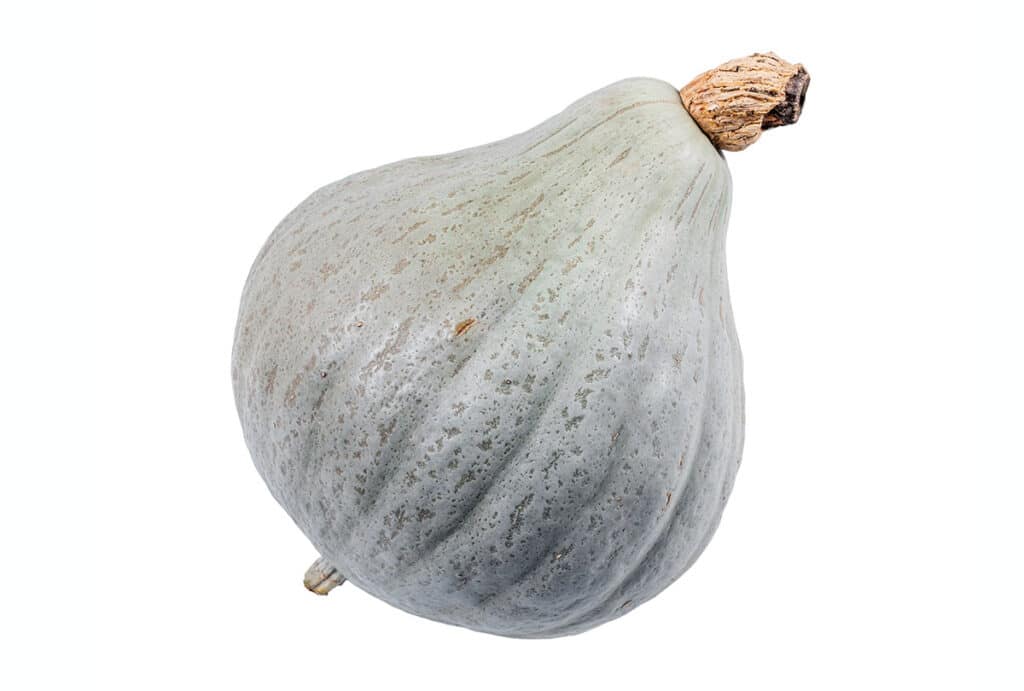
Honeynut Squash
Honeynut Squash looks just like a small butternut squash because it is a hybrid of butternut. It is also sweeter, has a darker orange pulp, and a thinner skin meaning you can roast them without peeling. Use them in any butternut recipe for which you want a sweeter flavor. This Mashed Butternut Squash Recipe would be the ideal recipe for the sweeter taste and to showcase the bright orange color.
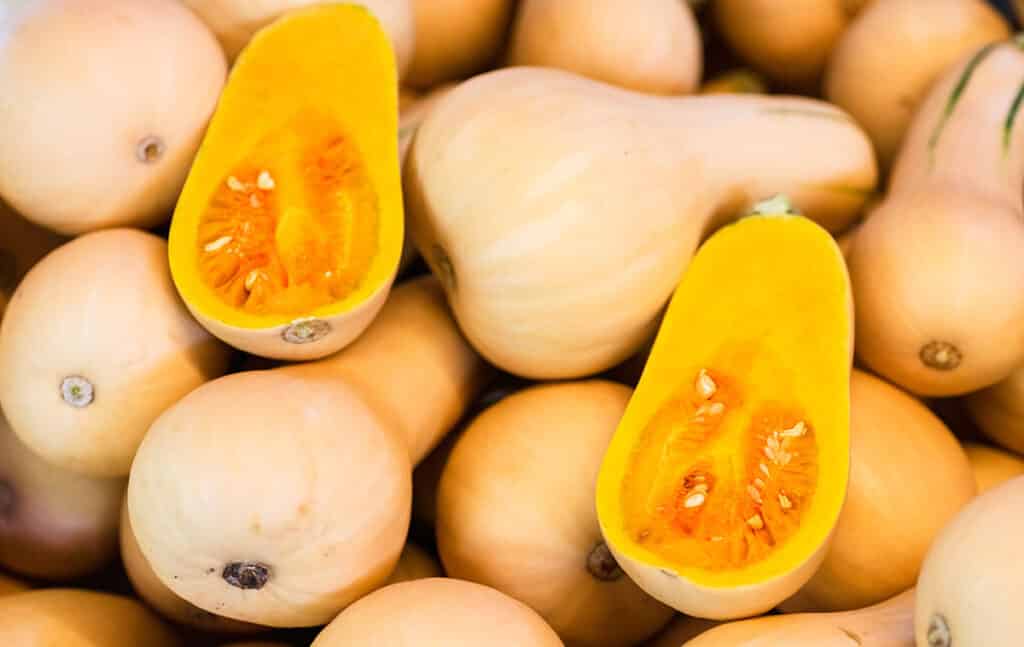
Jack-O-Lantern Pumpkin
This is actually a pumpkin variety not just the name for your artistic creation. These typically weigh in from 15-20 pounds and have a nice oval shape and orange color. These are not the sweetest pumpkins by any means, but believe me they are still good for cooking. Try roasting them or make them into pumpkin puree – How to Make Homemade Pumpkin Puree.
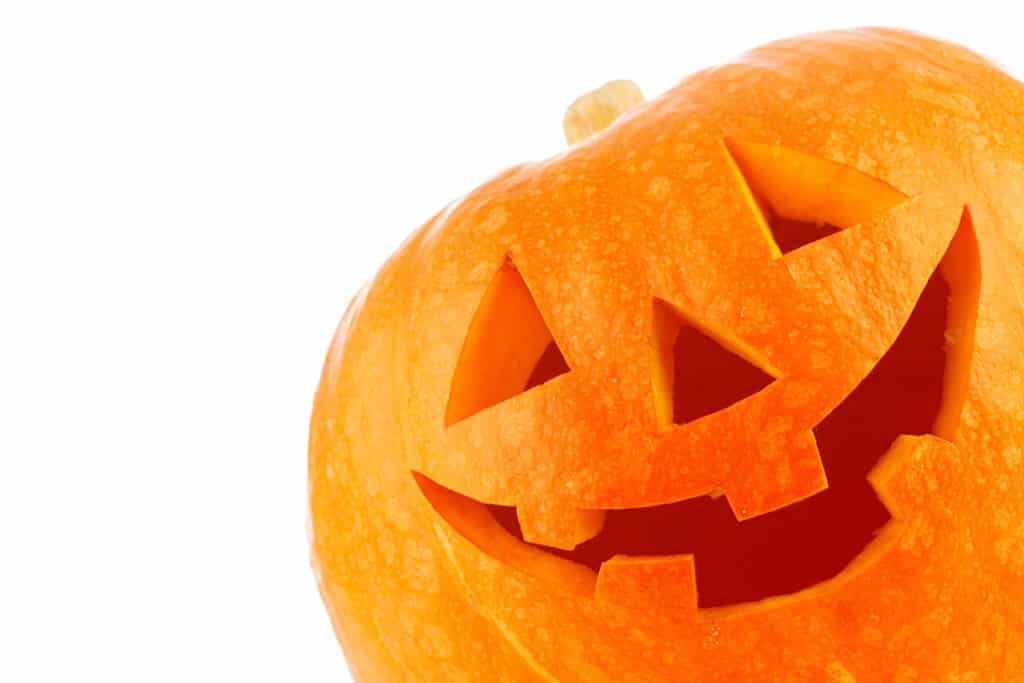
Long Island Cheese Pumpkins
Long Island Cheese Pumpkins are also known as Cucurbita Moschata. These are one of the oldest pumpkin varieties in America. They grow short and flat, making them better suited for cooking than carving.
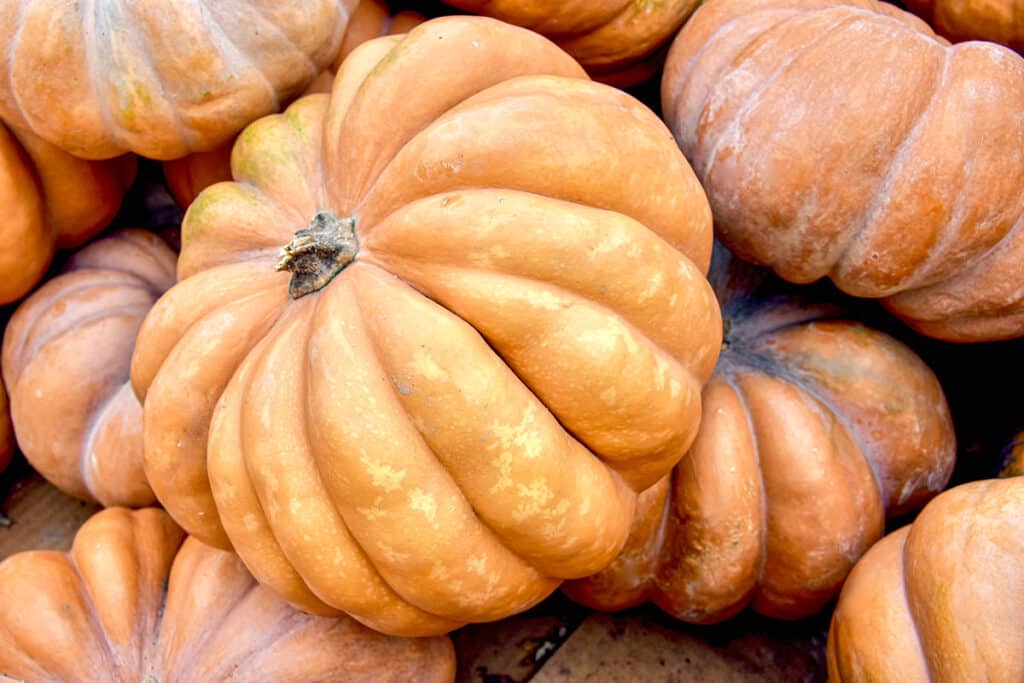
Lumina Pumpkins
Lumina Pumpkins are also called white pumpkins, ghosts, or full moon pumpkins. They have a smooth skin and 10-15 pound weight. Great for Fall décor, but also just fine to bake with. This cute variety (can a pumpkin be cute?) is perfect for both decoration and cooking. With an earthy flavor, white pumpkins are quite similar cooking-wise to butternut squash. You can use them in a number of ways from salad, soup, and casserole to waffles, muffins, and quesadillas!
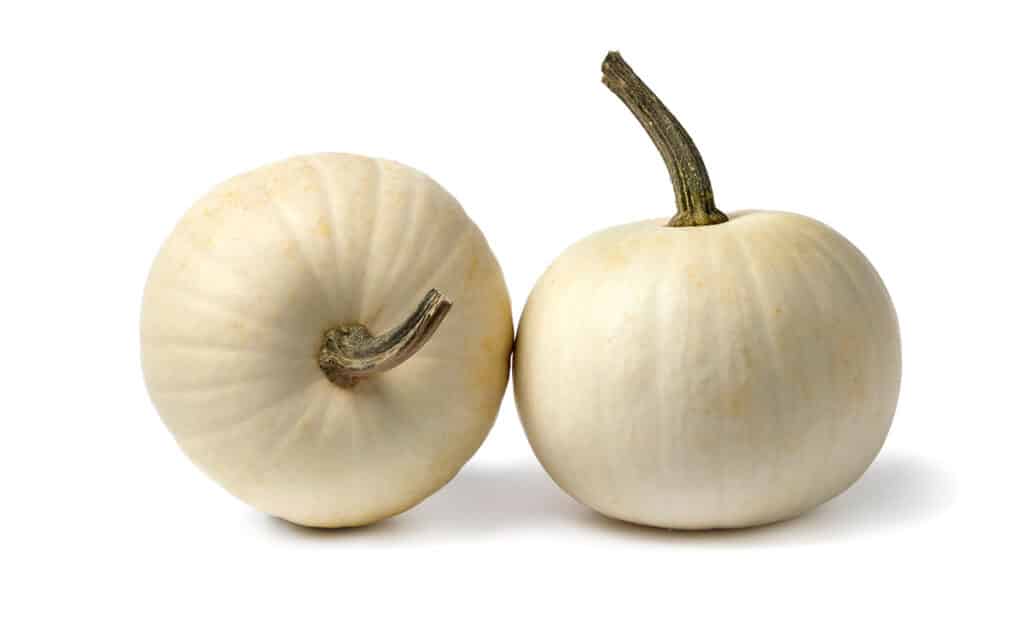
Pepitas
Pepitas are 9-12 pound pumpkins with a unique orange and green striped (or perhaps better described as patchy) skin. They are a great pumpkin for Autumn displays.
Pie Pumpkins
Pie Pumpkins come in the same bright orange shade as traditional pumpkins, but they’re smaller and rounder. As their name suggests, this variety is perfect for baking! Their sweet flavor makes them great for pureeing and using in pies, muffins, cupcakes, you name it. Thanks to their dense center, they’re great for dicing up and using in cooking. They’re not as stringy as traditional pumpkins. There are so many ways to cook pumpkin, but the base for many great pumpkin desserts is a good puree. You can buy that at the grocery, or you can make your own very easily. How to Make Homemade Pumpkin Puree. If you are interested in pumpkin nutrition information or more recipe ideas check out Pumpkin 101: Everything You Need To Know About Pumpkins.
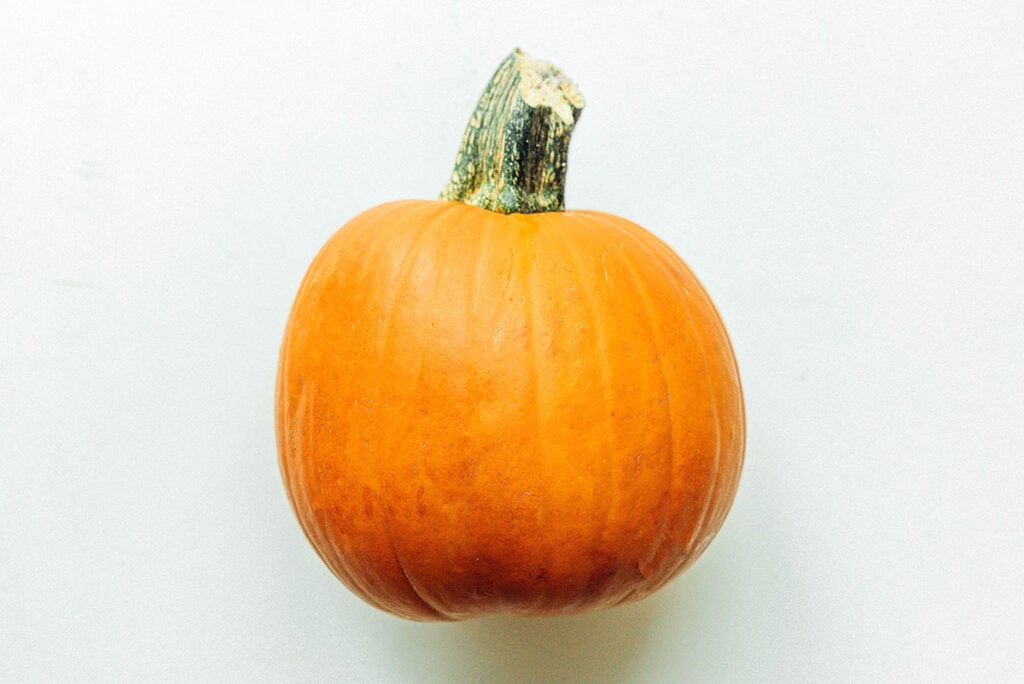
Prizewinner Pumpkins
Prizewinner Pumpkins are given this name for a reason. They can be coaxed to grow round with a uniform size and shape. The skin is smooth with a bright orange color. These pumpkins grow in the 20-100 lbs range, so they can be quite large.
Red Kuri Squash
Red Kuri Squash are shaped like onions, but have deep red-orange skin. You can use this squash like most others, but its size and appearance make it an ideal substitute in Stuffed Acorn Squash.
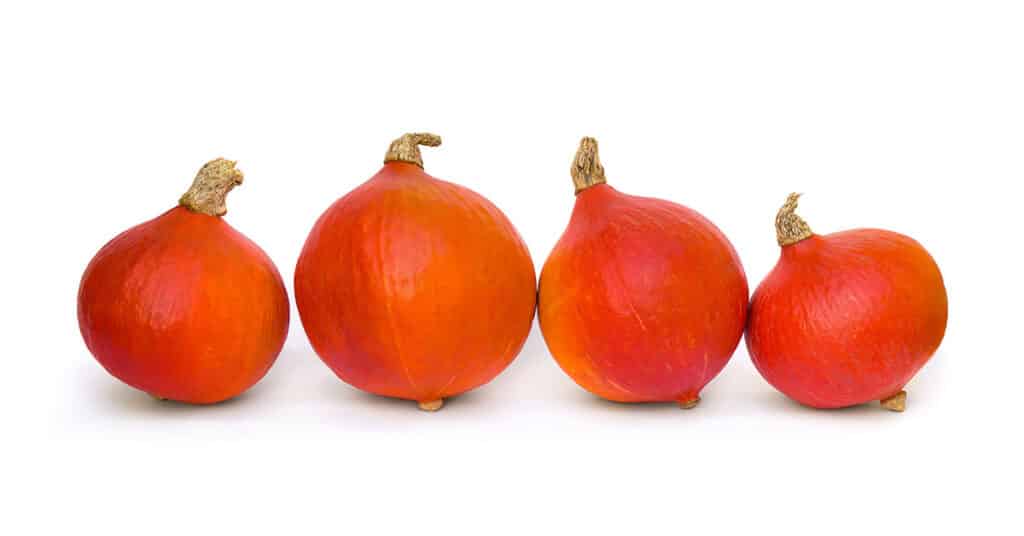
Red Warty Thing Squash
Red Warty Thing Squash looks like, well it looks like the name it was clearly given for a reason. It has a misshapen appearance with a very hard skin which is great for preserving them over time, but not for cutting. It is a variant of the Red Hubbard squash, thus the lumpy outer skin. The flesh of these squash, however, is said to have a pleasant sweet taste.
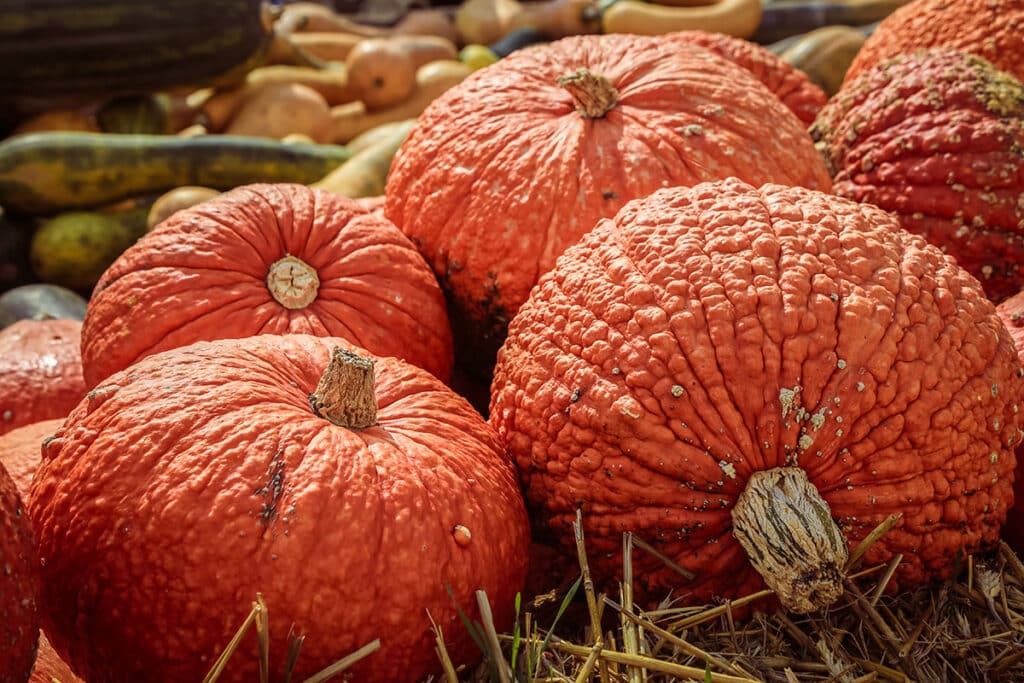
Spaghetti Squash
Spaghetti Squash are a miracle of nature. The flesh forms into stands which are easily raked out with a fork to make a wonderful bright yellow “spaghetti”. There are so many ways to use spaghetti squash. Boil it, bake it, microwave it, even cook it in the crockpot. Here are 6 Spaghetti Squash Recipes You’ll LOVE.
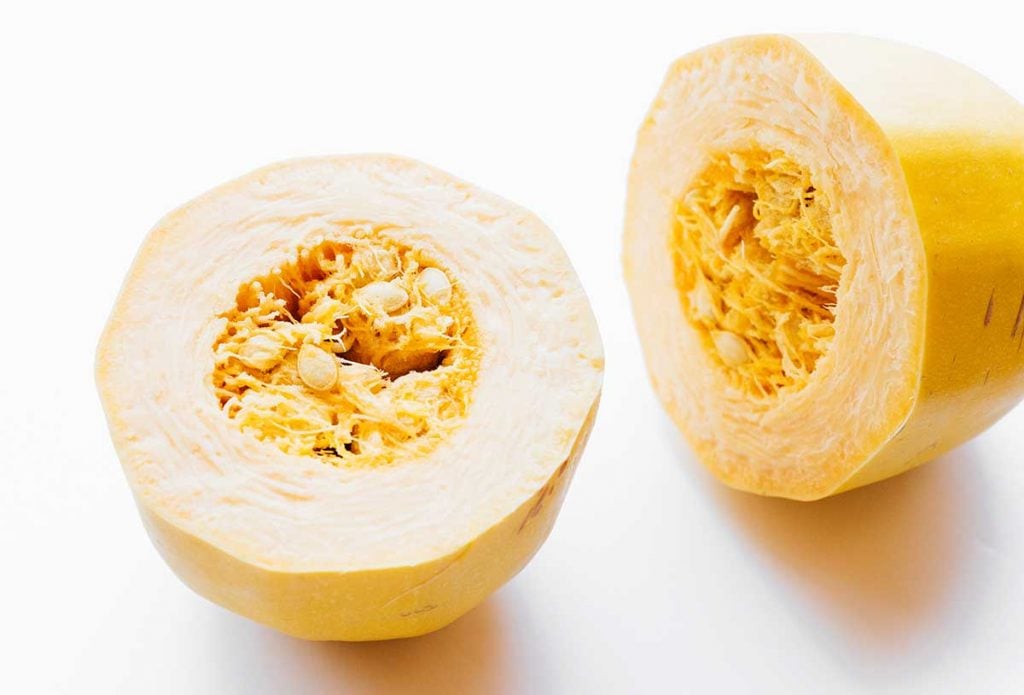
Super Moon Pumpkins
Super Moon Pumpkins shouldn’t be confused with Big Moon. The super moon variety is another white pumpkin that grows up to 50 lbs. Like it’s smaller brother the Casper, these are great for cooking.
Turban Squash
Turban Squash are a pumpkin variety with a truly unique appearance. They look like a pumpkin with another slightly smaller pumpkin growing out of the head or perhaps smashed down on top. Adding to the turban like appearance is that the two halves generally are different colors be it orange, orange-red, or pale. Despite its strange appearance, they are said to cook up just fine.
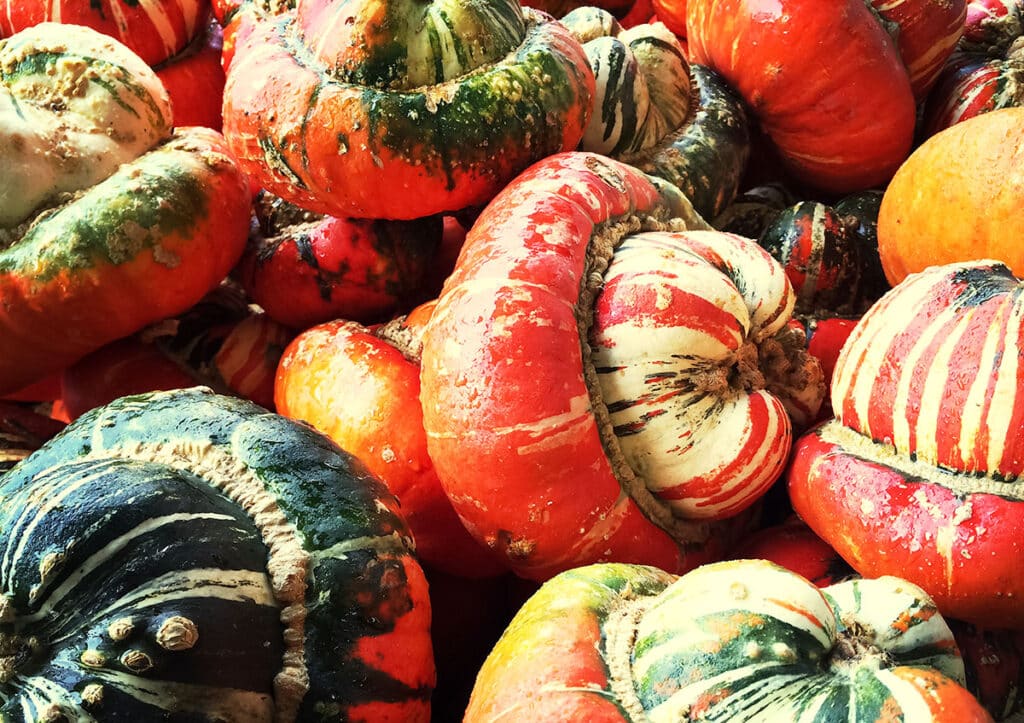
Yokohama Squash
Yokohama Squash is native to Yokohama Japan. It has an unusual grey skin with deep ridges weighing in around 3-4 pounds. They are purported to be delicious.
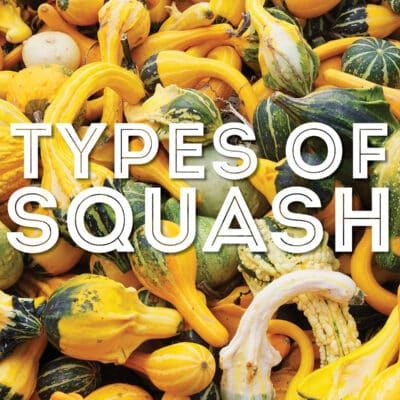
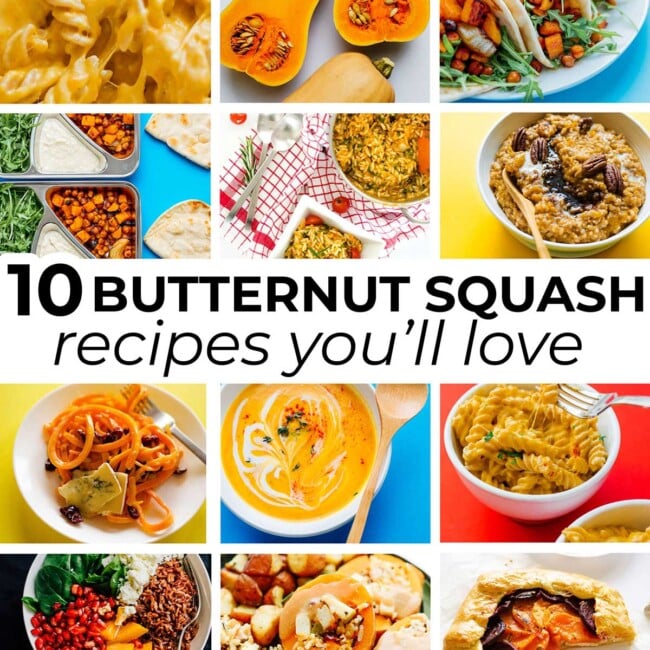
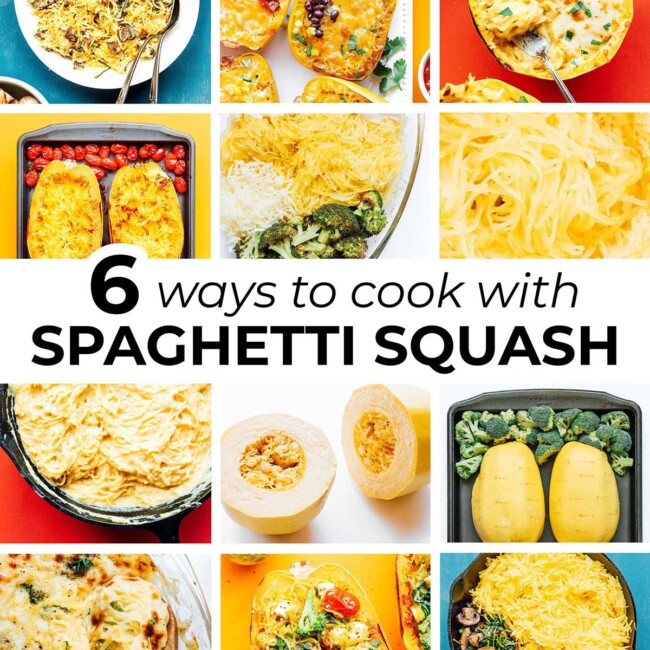
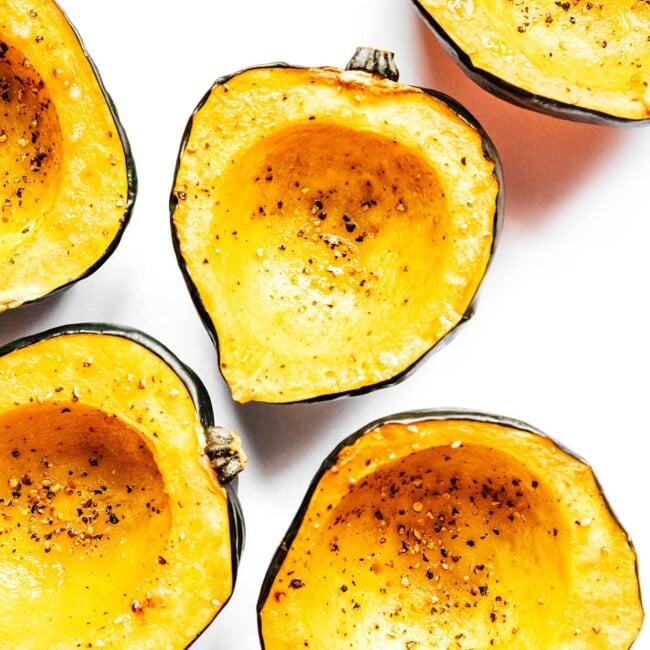
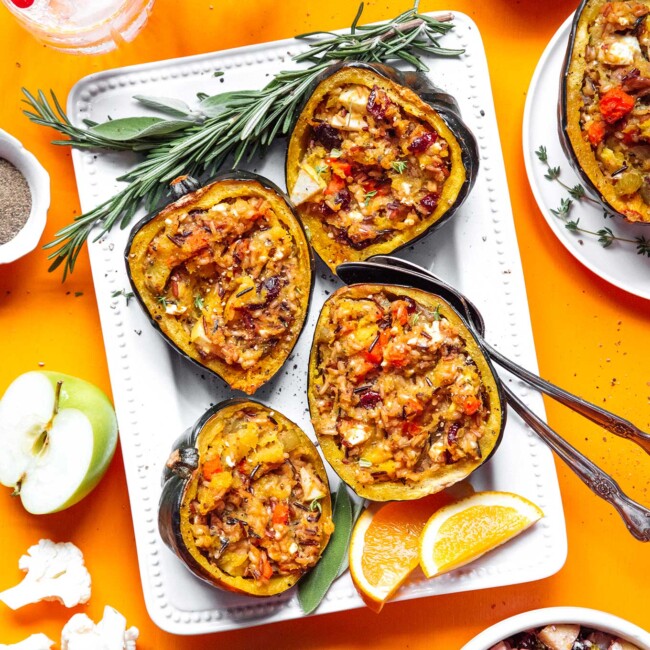
Richard Evanow says
I was given plant and told it was cucumber, but I have never seen a plant like the before. the fruit is Yellow with a bit of dark green on end and is of Pear shape. I think it might be a type of Squash. Have you any idea what it is from my dicription.??.
Sarah Bond says
Oh gosh I really don’t know! There’s so many types of squash it could be!
linda mc lintock says
Is there a squash with name like Dalaponte, it is about 6 inches long, and 4 inches in diameter, with green and white stripes. It might be dellaponte?
Sarah Bond says
Could you be thinking of delicata? It looks like what you’re describing!
Val says
I bought a squash that is beautiful and smooth, light green in color, with seeds inside that are soft, i.e. would not have to be removed first in order to cook the squash. The marker in the store called it “Large Squash”, next to the Chayote Squash. So if it’s not a Chayote, what is it? And how do I cook it?
Val says
I do not think it’s a Delicata, as it has no stripes. It’s a lovely soft green outside.
Sarah Bond says
Could it be opo squash? I would probably cook it as you would zucchini (or other tender summer squash)!
Noel Bell says
Good morning, I have a type of Squash that I can not identify. It has similar visual characteristics to Patty Pan but is 10 inches in diameter, 4 1/2 inches in height.
It is a lovely shade of orange similar to the Pie Pumpkin on this site.
I would appreciate it if you could identify this Squash for me, also any other info that you may have.
Thanks and Cheers….Noel Bell.
Sarah Bond says
Patty Pan can come in various sizes and colors, so I think it may just be that! I would cook it similar to how you would cook other summer squash.
Richard Fabela says
Hi, my question is I saw a dark green squash that resembles the shape of a Cushaw but has a rather short neck and is not curved like a Cushaw, down here in South Texas it is called a Mexican squash but I can’t find it under that name…..its a favorite down here especially when cooked with chicken or pork. Do you have any knowledge on this particular squash..?
my mistake was not taking a pic of this squash
Sarah Bond says
Could it be a tatume squash?
Virginia Walters says
What squash is light green color like a green grape, smooth skin, shaped like a pear, large size like a watermelon and white inside?
Sarah Bond says
This sounds like a calabaza squash!
Jo Ann Miller says
yellow squash shaped like a baseball no name at place where i saw it
Sarah Bond says
Could it be a yellow eight ball squash?
Connie says
I bought a house in Illinois in April 2023. The ground level planter box began sprouting vines. 2 different “squash”? Are growing… I believe the one with the green and faint striping is a Tatume Squash. (A Mexican originating squash?). GiBut, the other one is it sunny know where they can it yellow and like that growing in the shape of of an acorn squash. But, yellow. There are about 3 or 4 and they all have the same shape and color. Wondering if it might be a Thelma Sanders Squash. .
Sarah Bond says
They do sound a bit like Thelma Sanders Squash! Always fun to see what pops up in the garden of a new house 🙂
ra says
a friend gave me a yellow squash but, it weighs five lbs – it is yellow and looks like a regular squash. It has to been something else?”?
Sarah Bond says
Most squash can grow to be very big, so it might have just grown larger than you would typically see at the store!
Howard E. Klinger says
I have squash growing that looks round and light skin and don’t know if they are summer or winter squash. Can you possible help me. Thank you.
Sarah Bond says
A summer squash usually has a delicate skin. If you can scratch it off with your fingernail it’s probably a summer squash!
Paula says
I planted spaghetti squash (I thought). Some of them are green striped and the others are yellow smooth. They are the same shape. Are they a different kind?
Sarah Bond says
I’ve seen spaghetti squash be green before it’s ripe, but I haven’t seen it striped so it may be different indeed!
Debra A. Hess says
Got this from food bank…looks like a green tomato(lite green/yellow in a indivisual clear
plastic wrapper/baggie),shaped like a med sized tomato/pear,pale green w/yellow spots&solid…I was told to cut in half,remove seeds, cut up& put in water & boil,to be eaten that way?…not sure what it is or how it should taste…
Phil says
Hi,
Have you heard of a lunchi squash?
Sarah Bond says
I haven’t!
Nancy says
We grew what we thought were acorn squash but they are bright orange. They are the shape of an acorn but smaller. What are they.
Sarah Bond says
This sounds a bit like kabocha squash!
Katherine Fallgatter says
My acorn squash have such hard shells we cannot cut into them either before or after baking.What do we do?
Sarah Bond says
Oh strange! For really tough squash, I’ll usually get my biggest knife and thwack it so it’s a little bit in the squash. Then sort of slam the squash and knife on the counter together to wedge the knife in deeper. If all else fails, you could boil or microwave to try to soften the skin?
timothy says
a volunteer squash grew. It looks like a zucchini only has hard dark green skin. It has kept in the frig for 3 weeks and still firm. Cannot find any similar looking for a name. Is it ok to eat.?
Sarah Bond says
It probably is! It could be bitter depending on the size, hard to say without knowing what type of squash it is.
Amy Victoria says
i got a big 10 pound squash for free with hard dark green skin and yellow flesh. I thought it was a fat zucchini. I dont know what kind it is, but i’m cooking it up right now and i’m going to try it cooked in butter.
What kind of squash did i get?
Sarah Bond says
That’s a tough one, it could be so many types of squash! It could be an over grown zucchini?